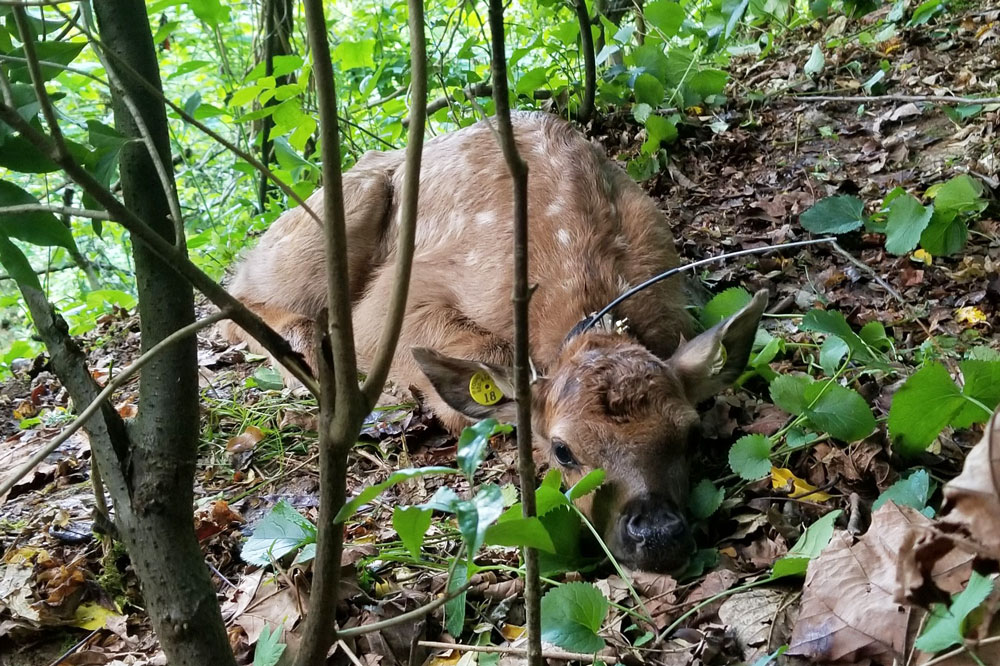Biologists in Kentucky are trying to get a better handle on elk reproduction by examining the survival rate of newborn calves. The three-year study, funded in part by the Rocky Mountain Elk Foundation, is a collaboration between the Kentucky Department of Fish and Wildlife Resources and the University of Kentucky’s Department of Forestry and Natural Resources.
The plan consists of using helicopter and other trapping methods to capture approximately 300 cow elk during the winter and outfit them with radio collars. Once captured, biologists use a portable ultrasound to determine if a cow is pregnant. If confirmed, they insert a vaginal implant transmitter (VIT) into the elk. The device communicates with the GPS collar worn by the mother and includes a proximity and temperature sensor. When the VIT falls below the predetermined temperature, that means a newborn calf just hit the ground and researchers receive text and email messages.
Crews use the mother’s last known GPS location to go to the area, then use telemetry to locate the birth site, which is where the VIT is usually laying. Because their on-site arrival happens just a few hours after receiving a notification, biologists often find the calf within about 50 yards of the birth site. They then perform a “work up” on the calf which includes giving it its own collar that will expand as it grows over the next year of its life to help generate survival estimates.
Given the project will take place over several years and across Kentucky’s 4.1 million-acre elk management zone, researchers will be able to determine differences in elk survival that will help with future elk management.
There are more than 11,000 elk in Kentucky. RMEF provided significant funding that assisted with the successful restoration of wild elk to their historic Kentucky range in 1997.
Since 1995, RMEF and its partners completed 187 conservation and hunting heritage outreach projects in Kentucky with a combined value of more than $9.1 million. These projects enhanced 4,453 acres of habitat.
(Photo source: Kentucky Department of Fish and Wildlife Resources)
